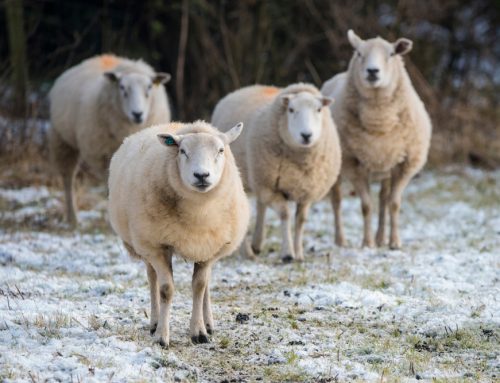Mastitis is a significant problem in our lactating does. It is present in both the dairy and meat production animals. There are many things that can contribute to mastitis problems including cold wet and muddy environments. Does that are heavily fed to encourage milk production are predisposed to mastitis. Physical factors such as teat fistulas, accessory teats, pendulous udder, and udder edema can contribute. Aggressive nursing by kids can also cause the problem. Does most often get mastitis around freshening but it can occur throughout the time they are milking and even after drying off. Most animals with mastitis have a hot swollen udder that is painful. However, some animals show no outward clinical signs (sub-clinical mastitis.) Mastitis can be divided into two major groups based on the source of the infection: contagious and environmental.
The two major contagious bacteria that cause contagious mastitis are Staph aureus and Streptococcus agalactia. These bugs are transmitted between goats through poor unsanitary milking practices. Hands should be washed between goats (or better yet, disposable gloves should be worn and changed between goats.) Milking equipment should be cleaned between goats. Milk should not be squirted on the ground where another doe might lay down and contaminate her udder. Inflammation from these organisms will cause decreased production, abnormal milk, and increased somatic cell counts (white blood cells in the milk.) Infections can be treated by aggressive antibiotic treatment but infection will often reoccur. Dry treatment—treating at the time you dry the doe off—is often more successful in controlling this type of mastitis. (A common dry treatment that can be found at feed stores in our area is “Tomorrow”.)
Environmental mastitis—often called Coliform mastitis is caused by organisms that enter the mammary gland from outside of the milking parlor due to unsanitary environmental conditions. Frequent bacteria types are E-coli and Klebsiella. This type of infection can spread throughout the entire body causing illness and death. Antibiotic therapy can often fail. Vaccination of cows has proven helpful and may also help in goats. Vaccines are given during the dry period and soon after kidding. Cleaning teats prior to milking and dipping with teat dip after milking has shown to significantly decrease the incidence of mastitis.
What to do if you think your doe has mastitis…
Before you treat get a sterile sample of milk and freeze it. You can contact me and I can provide you with a sterile container. Clean the udder well including the teat orifice. Gently squirt a small amount of milk out into a separate container. Then squirt 2-3 squirts of milk into the sterile container be careful not to touch the rim or inside of the container with the teat or your hand. Carefully tightly close the container. This milk should be frozen, we can send it off for bacterial culture and sensitivity if our initial antibiotic treatment fails. Culture and sensitivity will tell us the type of bacteria and which antibiotics it will respond to.
If the doe does not appear clinically sick stripping the affected half out every 2-3 hours may be all that is needed. If antibiotics are required, often intramammary and systemic antibiotics are needed. When using teat infusions please do not put the entire tip of the tube into the teat sphincter as this could damage it. Only put about ¼ inch of the teat canula into the canal. A teat infusions that can be gotten over the counter at the feed stores in this area is “Today” however, there are others that contain different types of antibiotics and may be necessary.
Remeber with mastitis…..cleanliness is the best practice!






Leave A Comment